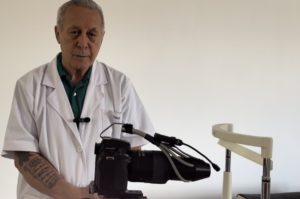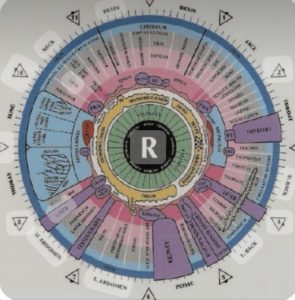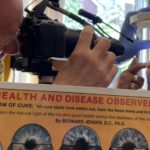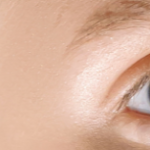How Is Iridology Done?
Iridology is an alternative medicine technique that enables weaknesses or potential weaknesses in various organs in our body to be identified, even before the symptoms arise. Iridology is done by looking at various colours and markings in the Iris and referring to an Iridology Chart. The Iridology Chart was designed by observing over 1 million pairs of eyes over the years and how each part of the body such as the brain, lungs, liver, skin and digestive system have corresponding regions and locations within the iris.
Iridology was discovered during the 17th Century where writings and works on Iris markings and their meanings were recorded mainly by Medical Practitioners. Assessing health through Iridology, which is the study of the eyes is thought to date back at least as far as ancient Greece and Hippocrates, also known as the Father of Medicine. Dr Ignatz von Peczely, a Hungarian Doctor first developed Iridology after noticing a prominent marking appearing at 6 o’clock in the bottom or the iris in the eye of an owl who had broke its leg. As he nursed the owl, he observed that the dark shade lightened as the leg started to heal.
Iridology Diagnosis is carried out either by direct observation of the eyes, with the aid of a magnifying glass and torch or by taking detailed Iridology photographs. Iridologists then examine the photographs and compare these to the Iridology Chart. Iridologists provide patients with specific findings and concerns based on what they see.

The use of modern Iridology cameras such as the one in the photo enables accurate digital photos to be taken to a satisfactory quality, enabling accurate analysis of the person’s iris, which is the coloured part of the eye and of the person’s sclera, which is the whites of the eye.
Years ago, you may recall Medical Practitioners shining a torchlight into your eyes to spot potential health concerns. Over the years, special Iridology cameras have been created and most modern Iridologists use these Iridology Cameras instead as this enables the patient to view what their eye looks like instead of relying on the Iridologist to try describing to the patient what has been spotted. Keeping digital Iridology photos also enables future photos to be compared with previous ones so that the monitoring of progress or deterioration is more accurate.
Having an Iridology check up is really useful, similar to checking our vehicles annually or before a journey or long journey. The logic behind ensuring our vehicles, boilers or other appliances are checked or serviced regularly is to ensure these do not cause any inconvenience or minimise any inconvenience should they breakdown unexpectedly and at a time when we rely on them the most. It therefore makes a lot of sense to also give priority to our health and have regular non invasive check ups. This is important because, sometimes symptoms for life changing and life threatening diseases do not appear until it is in its later stages. Discovering an illness or potential illness sooner, gives the person a much better chance of preventing or treating it before it becomes worse.
To discover how Iridology is performed or what to expect during a detailed Iridology consultation, watch our TV recording below where our Principal Iridologist, Ronald Delary-Simpson was interviewed.
The Iridology chinrest is similar to those used by Opticians. The chinrest enables you to comfortably rest your chin so that your head is kept straight and the Iridologist will then explain how the Digital photos will be taken. If your head is tilted incorrectly, this will affect the analysis of the eye photos since the markings are like those for a clock and the marking for 3 o’clock for example needs to be 90 degrees right of 12 o’clock and not less or more, which is caused if the head is not kept straight. If you have a lighter colour blue, green or lighter brown coloured iris, a different light exposure will be used compared to if your iris colour is much darker.
Often, prior to taking the photographs, we also like to use a magnifying glass and torch to get an idea of potential weaknesses and areas of the iris and eye photos to focus on. As the photos are digital, several attempts may be required to ensure the clearest photos are taken for accurate analysis.

Photos of both right and left eyes will be taken as the right eye shows the organs on the right half of our body and the left eye shows the organs on the left half of our body. For example, the right eye will reflect the larger right lobe of our liver and the left eye will reflect on the smaller left lobe of our liver. In general, the higher organs such as our brains and thyroid are at the top half of the iris and the lower organs such as our kidneys, genitals and feet are at the bottom half of the iris.
The eye photos will then be transferred onto our laptop or computer, where we can show the patient on a wider screen what the photos look like. Most patients are amazed when they see their eye photos for the first time. We then pin point the key areas of strength and weakness, which could be around five main areas to focus on. We could spend hours analysing in greater detail, however to do this especially during the first appointment would leave the patient in overwhelm of information and action steps to take. We pinpoint the most important or critical areas to deal with and then recommend follow up consultations where new eye photos are taken. We therefore give guidance on a step by step basis so that results are more achievable and patients are more likely to stick to changes in lifestyle so that they achieve and maintain a higher level of Wellness over time.
Unlike visits to the General Practitioner Doctors, where the appointment is very strictly time based and restricted to under ten minutes per appointment, our Iridology consultations are more results focused so we do take time to understand your medical history and lifestyle, some or all of which you can share with us prior to the appointment to enable better use of your appointment time. We also go through the foods, drinks, medication and supplements (as relevant) that you are currently consuming, together with specific stress you have as all these factors impact your health. We also recommend natural solutions after analysing your eye photos so an initial consultation with us would take at least ninety minutes.
Have you ever wondered how a General Practitioner Doctor can help you with an illness within ten minutes? This may be an illness you may have been having for days, weeks, months or years! This is because, within that time pressure, all they can do is prescribe chemically based medication which will harm your health further in the longer term. Have you ever wondered why these professionals rarely ask you what you eat, drink or how your lifestyle is?
For those who are keen to have typed up summaries of the findings of their Iridology consultation, we do provide these upon request and quote a fee to cover additional administration time. We do voice record key areas of the consultation and these are shared to the patient for their records at no additional costs.
Do check out our other related blogs:
Iridology Pictures and Meanings
Can You See Illness In Your Eyes?
NEXT STEPS
Book in a complimentary 15 minutes Zoom call with us (valued at £99) to enable us to clarify questions you may have on a specific health concern.




